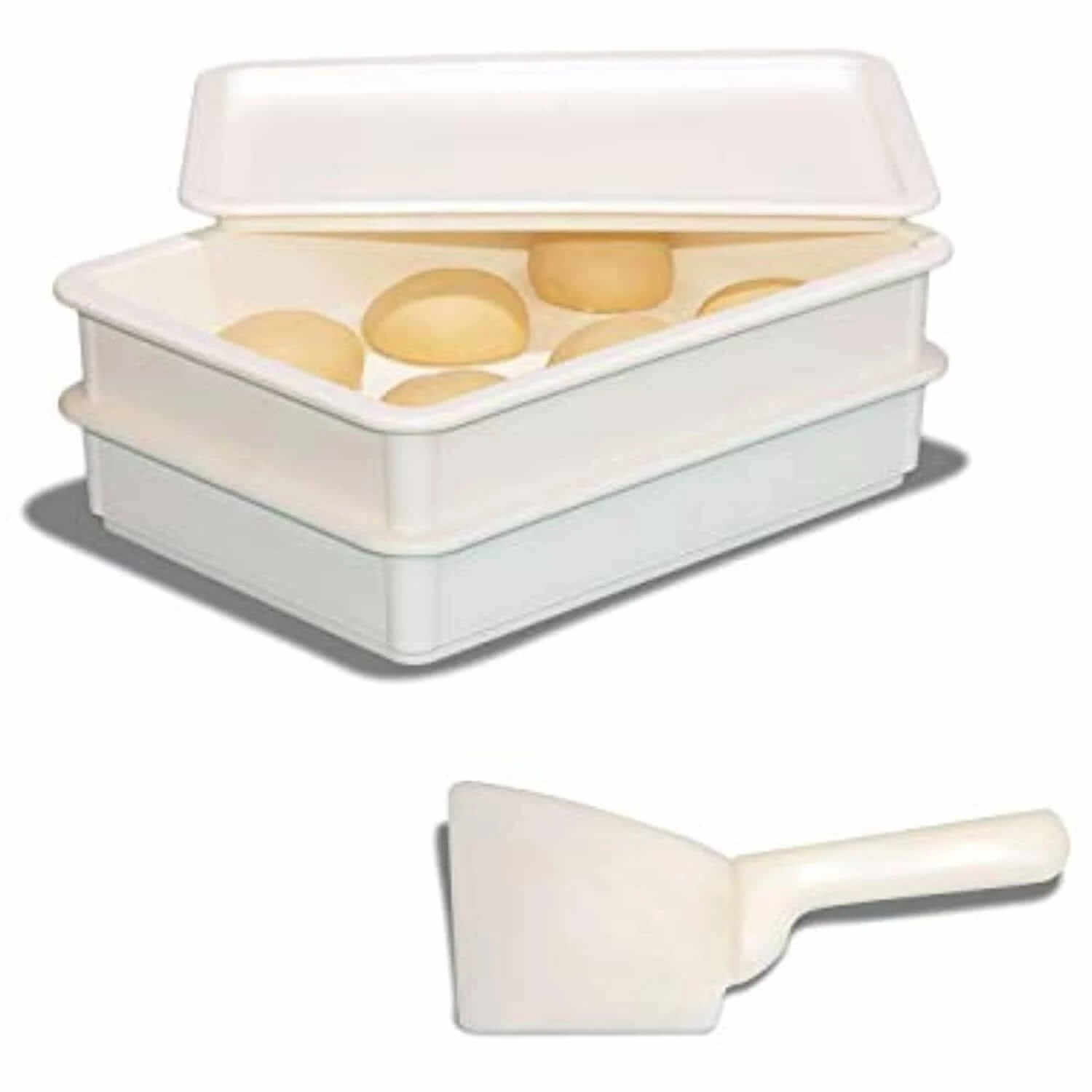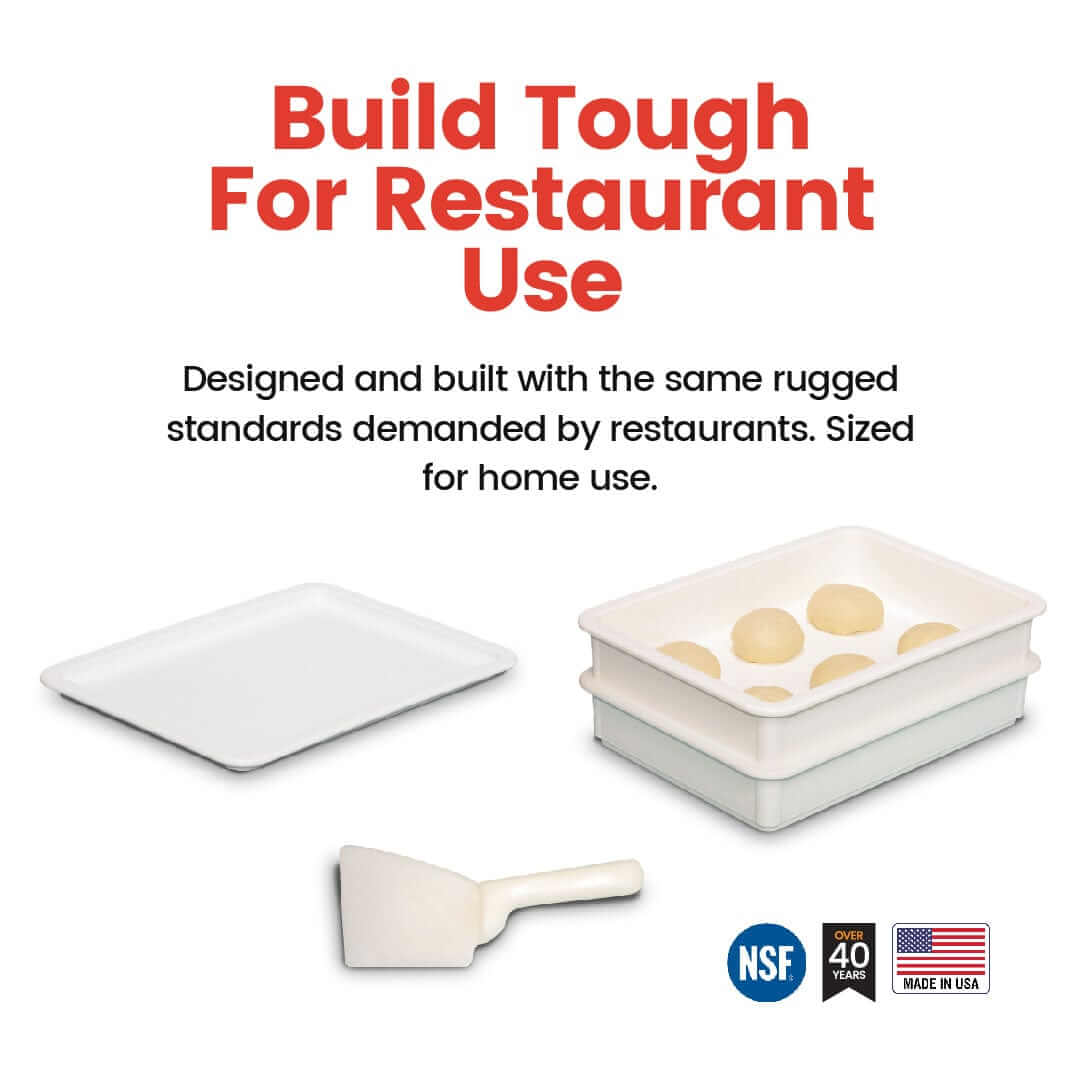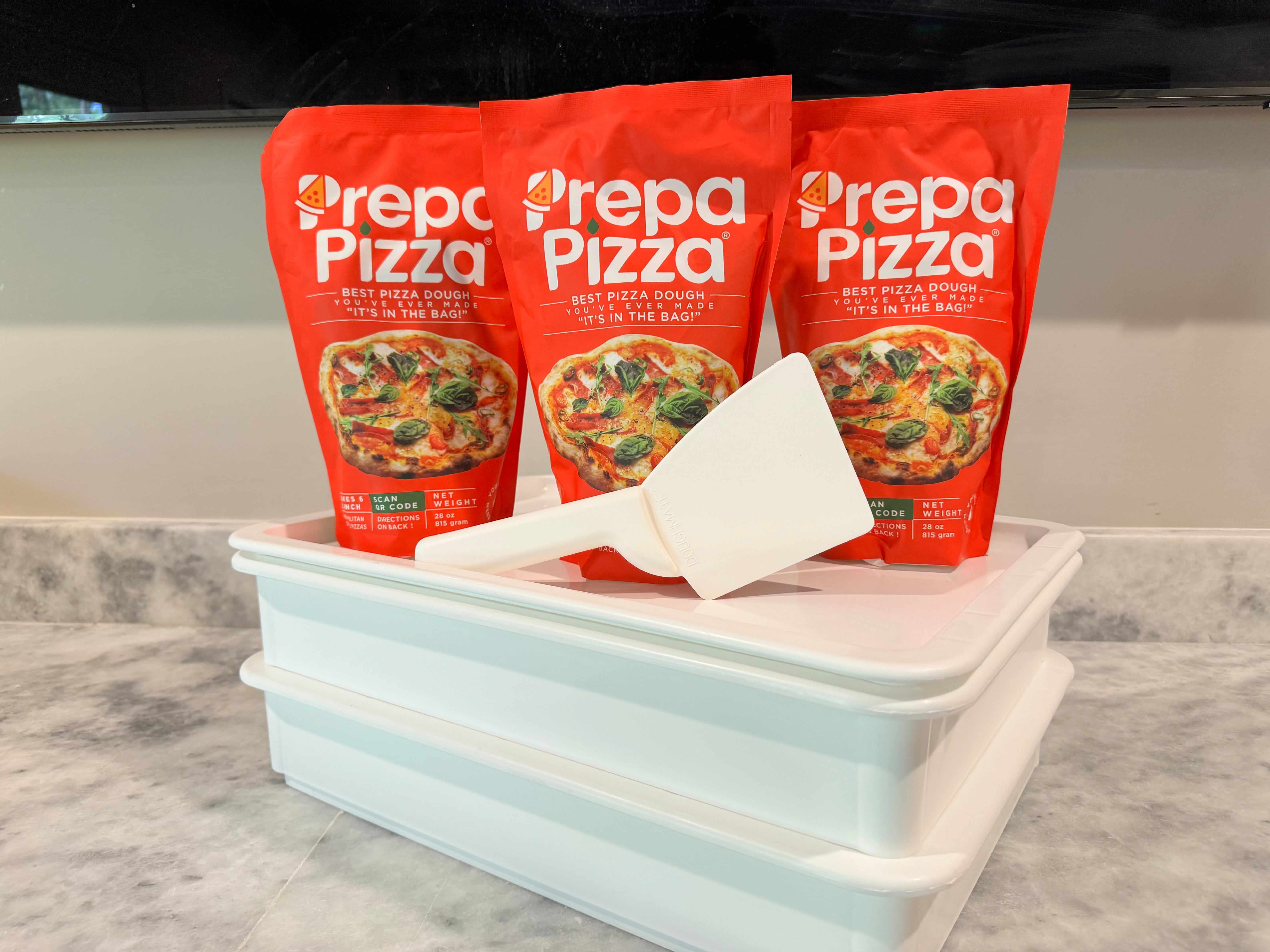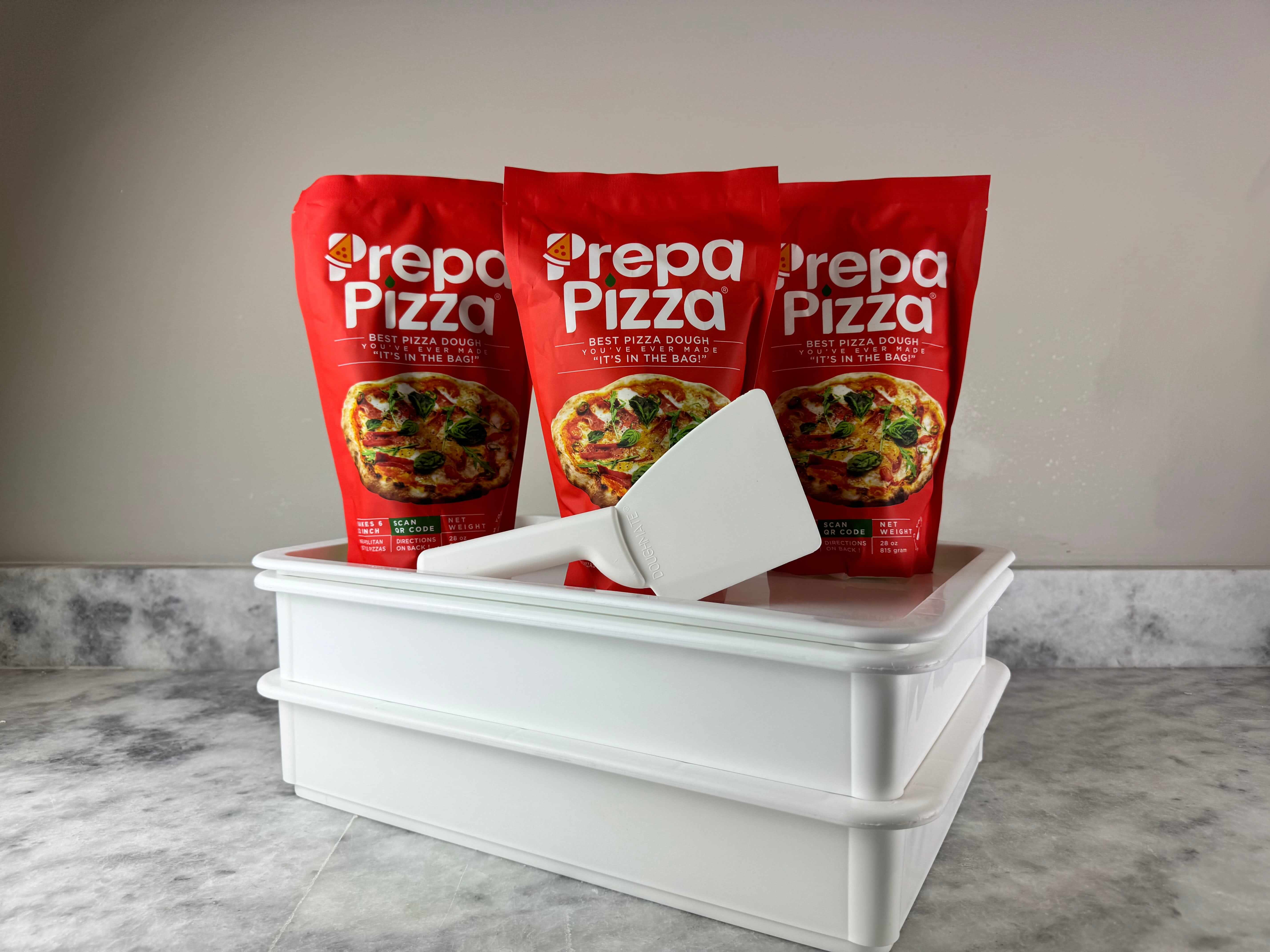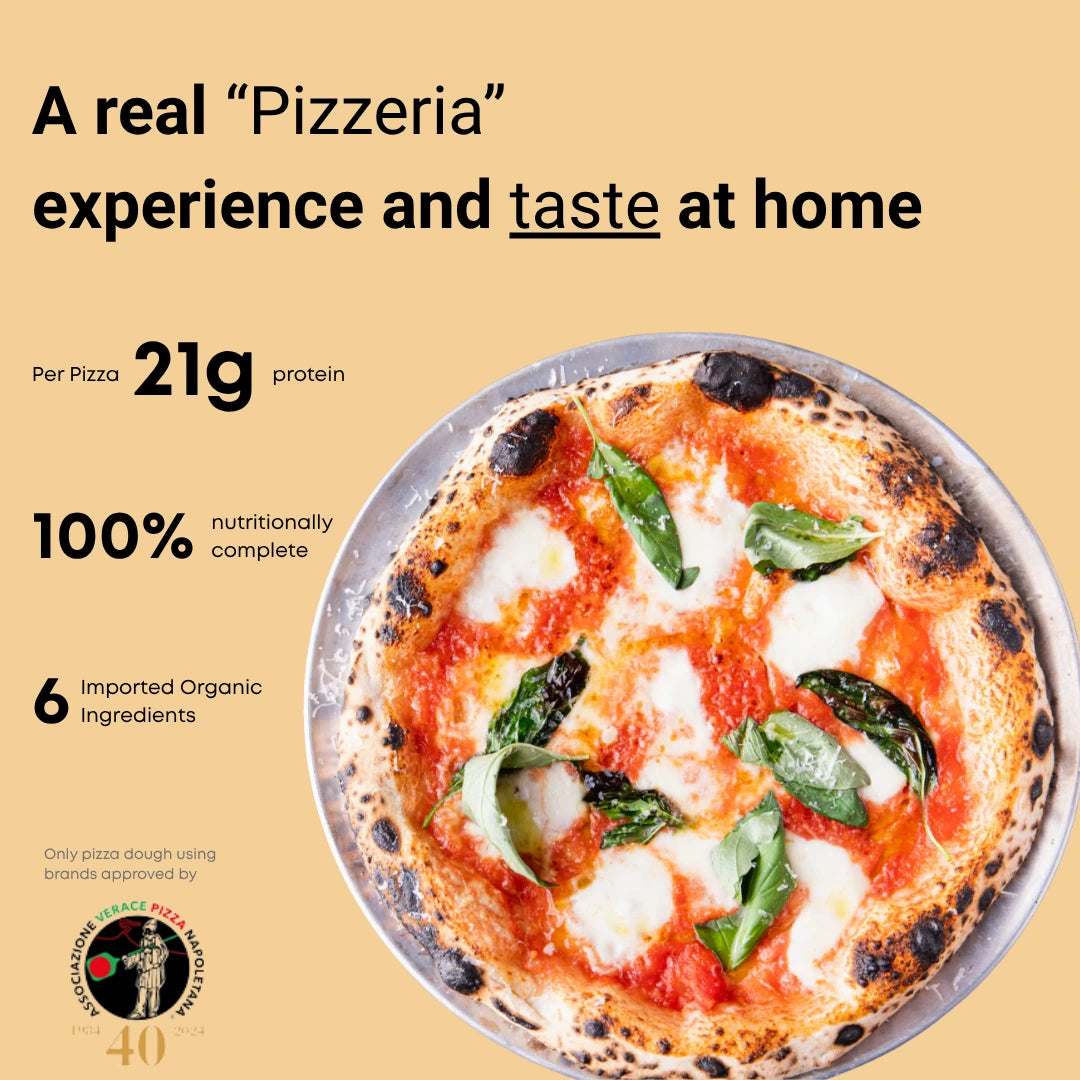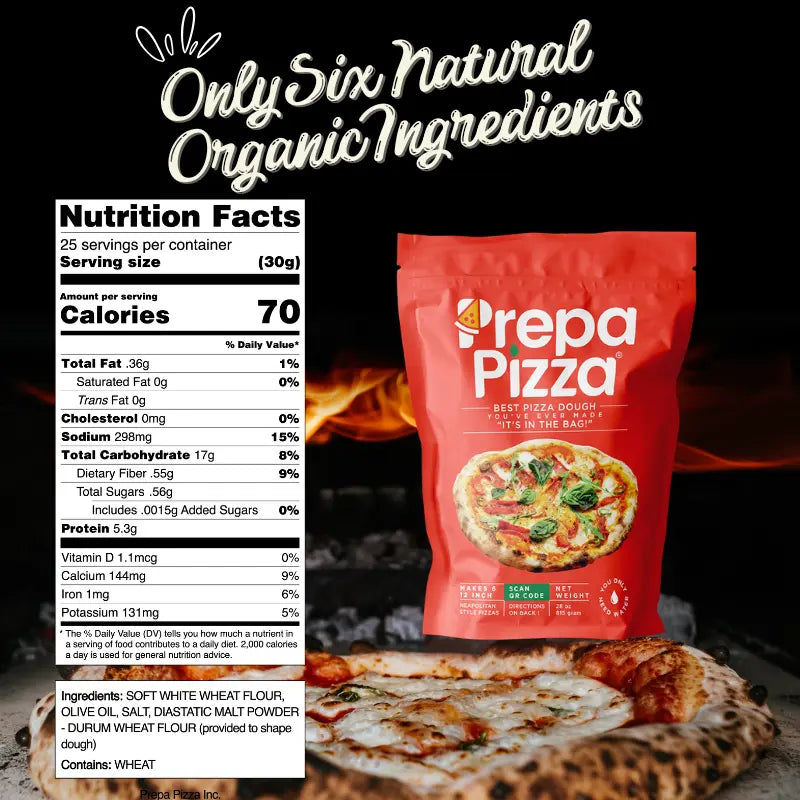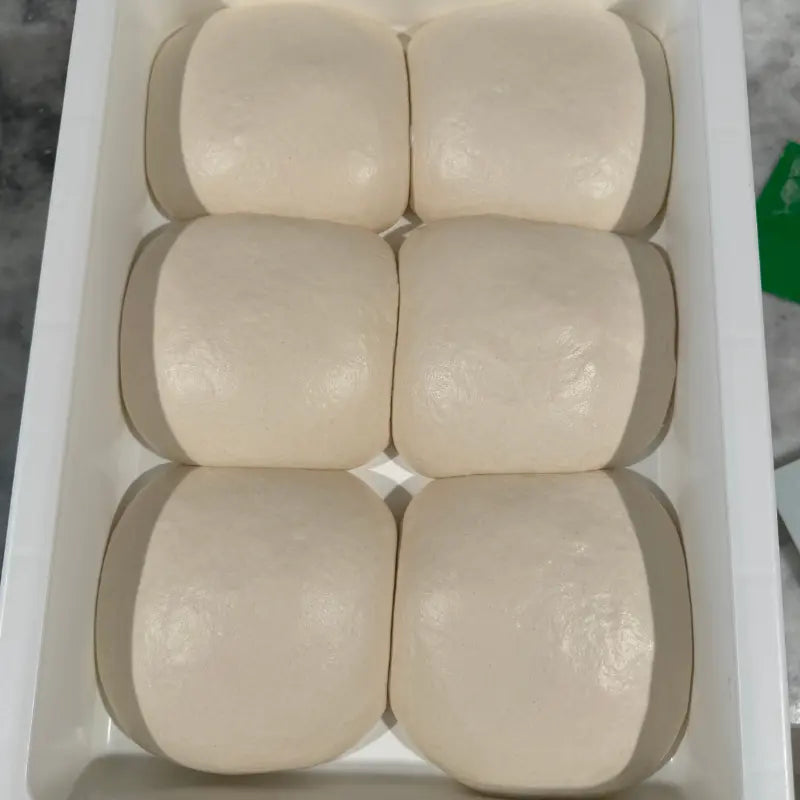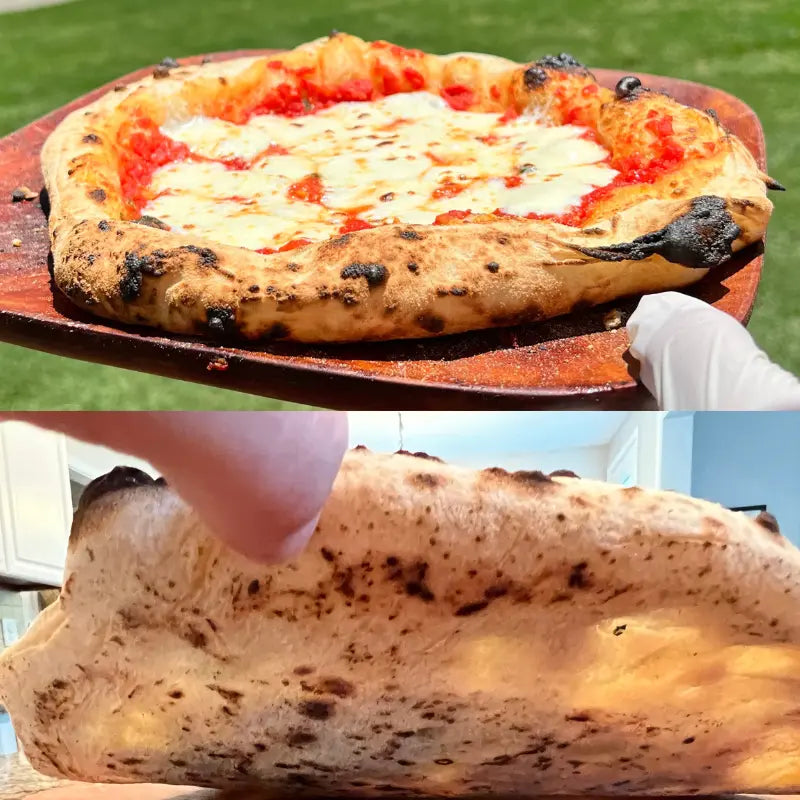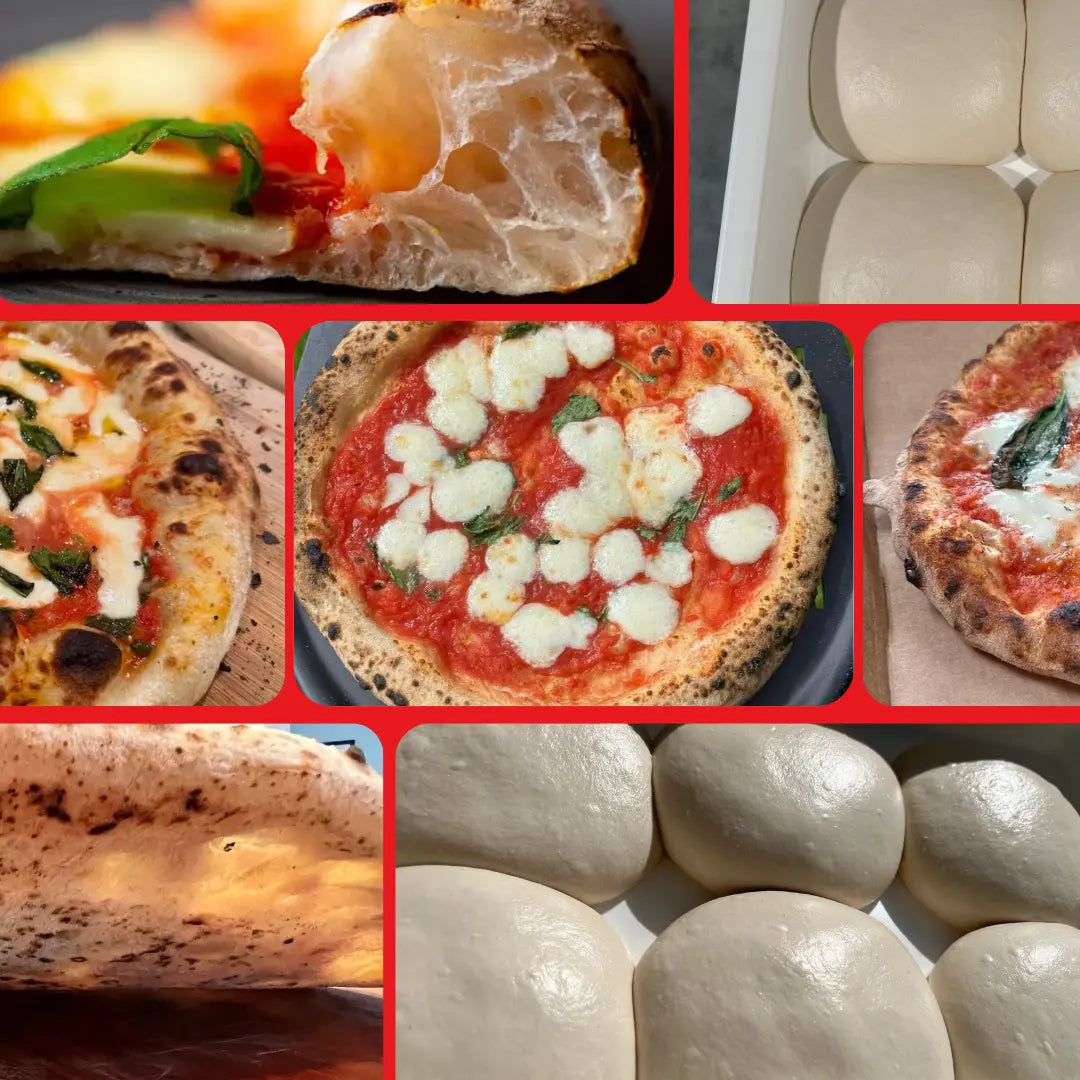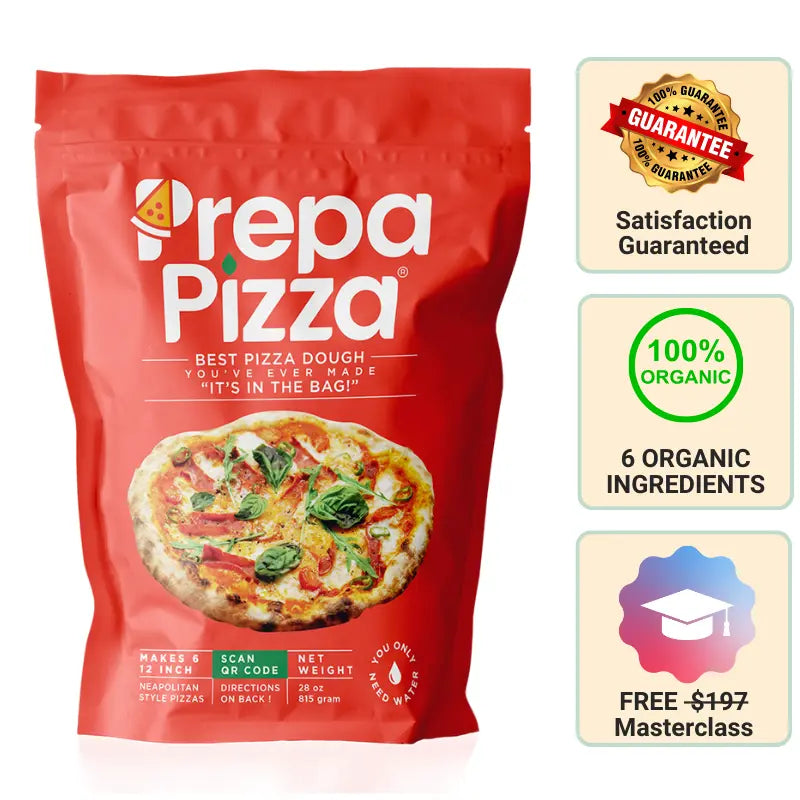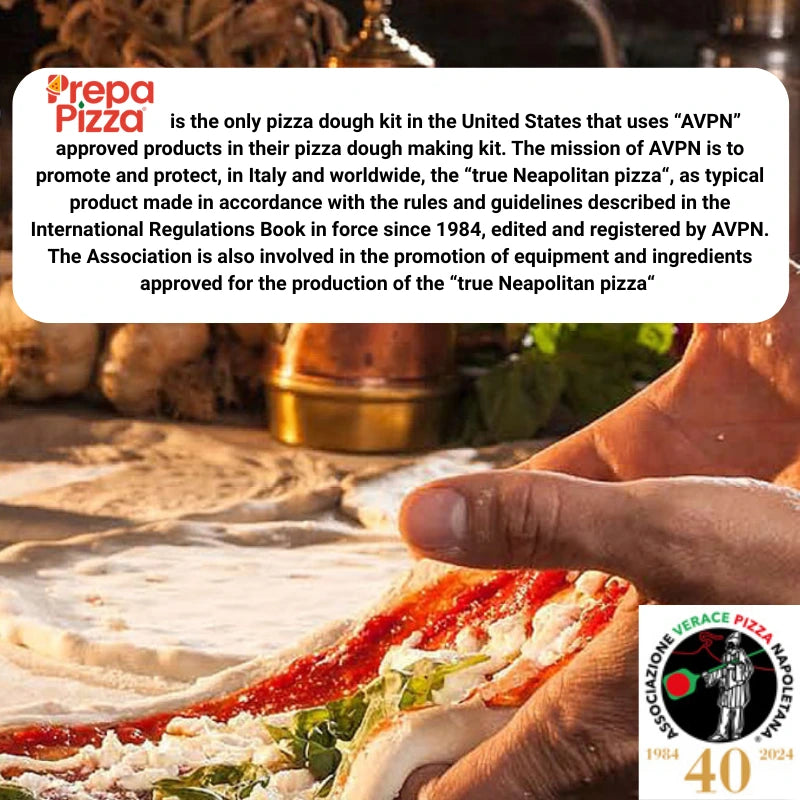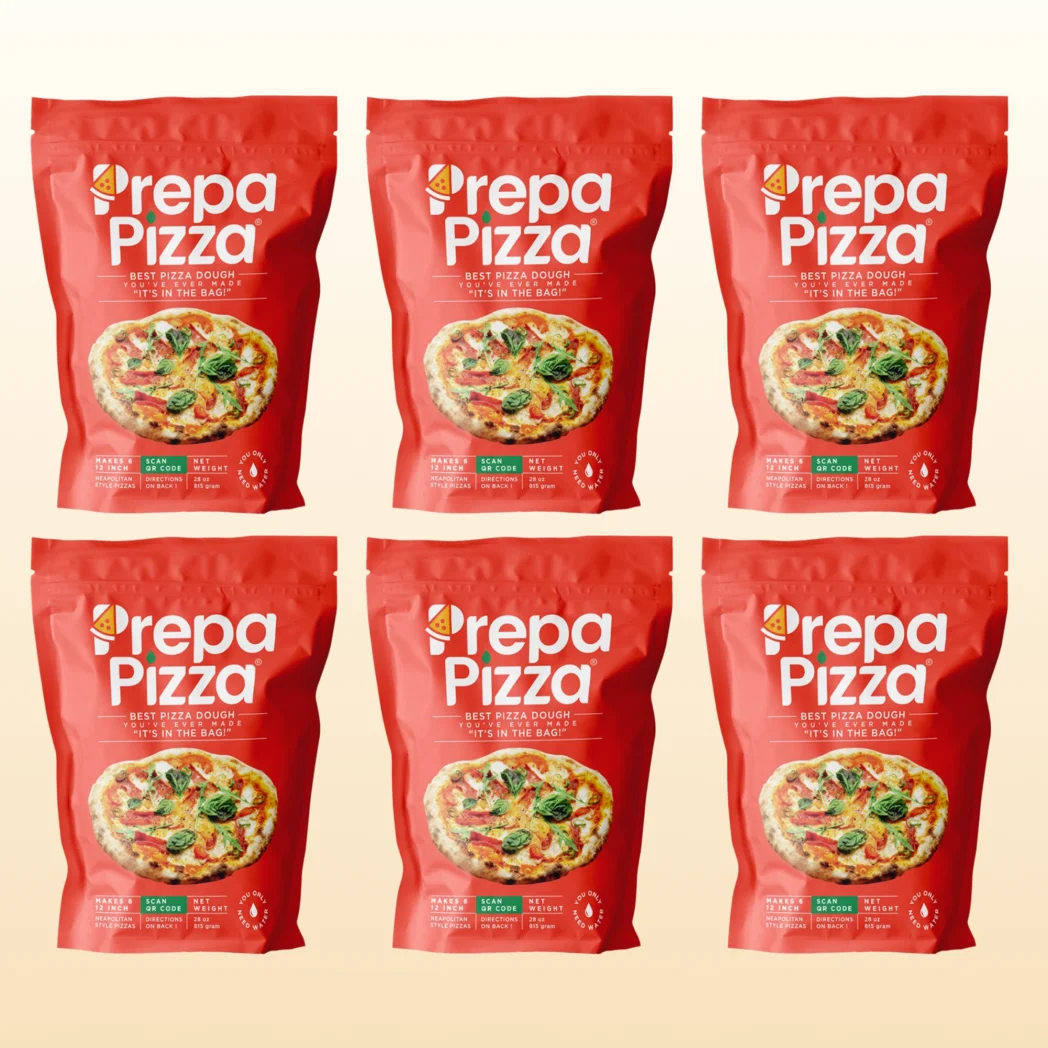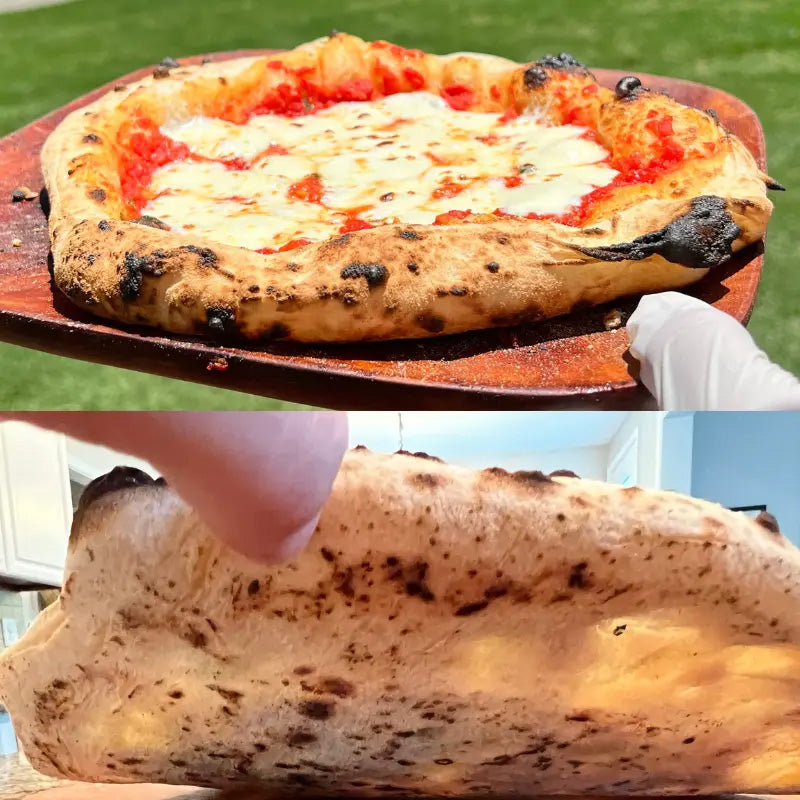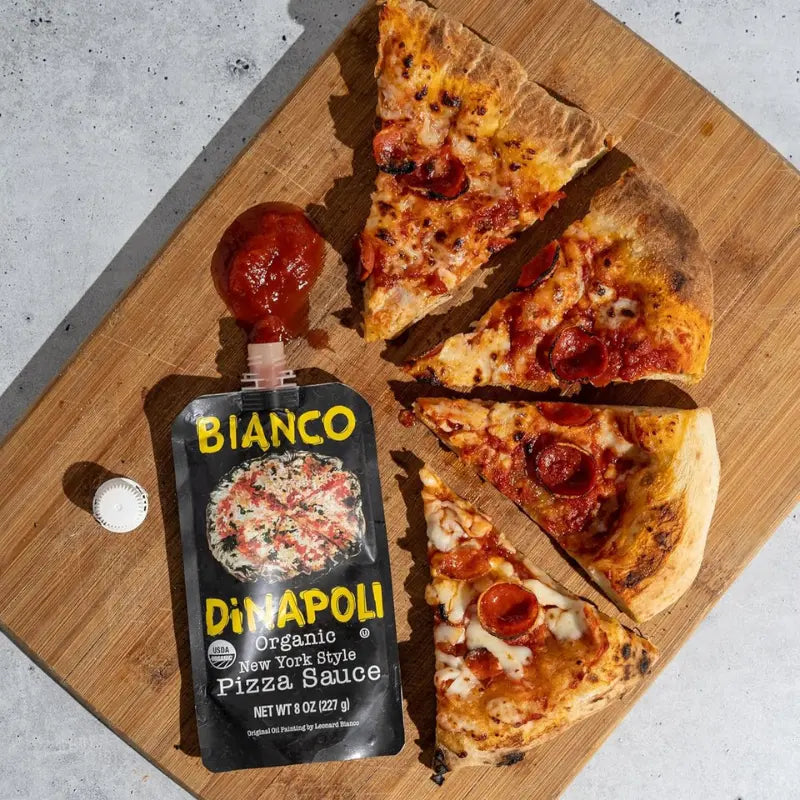
Why Is My Pizza Crust Dense Explained: Common Causes and Quick Fixes
If your pizza crust turns out dense instead of light and airy, it usually means the dough didn’t rise enough or the gluten wasn’t developed properly. Dense crust often results from underproofing, over-kneading, or using the wrong flour type. Using quality ingredients and proper dough handling are key to avoiding this common issue.
Using Prepa Pizza’s premade dough can help you achieve a consistent, restaurant-quality crust because it’s made with premium ingredients and expertly prepared to rise correctly. You can take the guesswork out of dough preparation by starting with Prepa Pizza’s reliable dough kit, available here.
When you understand what causes density in your crust—and how to avoid it—you’ll get closer to the perfect pizza every time you bake. Prepa Pizza’s dough supply gives you a solid foundation, so you can focus on toppings and technique without worrying about the basics falling short.
Core Causes of Dense Pizza Crust
Achieving a light and airy pizza crust requires precise control over dough fermentation, ingredient choices, and hydration. When any of these factors are off, your pizza crust can turn out dense and heavy, even when using high-quality premade dough like Prepa Pizza’s premium dough, which is designed with restaurant-quality ingredients to optimize texture. You can explore their dough options here for consistency and quality in your homemade pizzas.
Understanding dough behavior will help you avoid common pitfalls that lead to dense crusts. Below are key reasons why your pizza dough may not rise or develop as expected.
Underproofing and Overproofing
Proofing is the process where yeast ferments the dough, creating gas bubbles that lighten the crust. Underproofing means the dough hasn’t risen enough, resulting in fewer air pockets and a tightly packed crumb. This leaves the crust dense and tough after baking.
On the other hand, overproofing occurs when the dough rises for too long. This can exhaust the yeast, causing the dough structure to weaken and collapse, which leads to a heavy, flat crust. Both underproofed and overproofed dough lack the elasticity needed for a light bite.
When using Prepa Pizza’s premade dough, it's best to stick to the recommended proofing times and temperatures to avoid these issues.
Incorrect Flour Choices
The type of flour you use significantly affects dough structure. Bread flour with higher protein content builds stronger gluten networks, ideal for chewy yet open pizza crusts. In contrast, 00 flour, commonly used in Neapolitan style pizzas, has a lower protein level but creates a tender, delicate crust when combined with proper hydration and fermentation.
Using a low-quality or inappropriate flour can break down the gluten structure, leading to a dense result. Prepa Pizza sources quality flours suited to their dough blends, giving you a strong gluten framework that resists becoming heavy after baking.
Improper Hydration Levels
Hydration refers to the ratio of water to flour in your dough. Too little water makes the dough tight and hard to stretch, limiting gas bubble formation. This causes a dense, compact crust.
Higher hydration levels allow for better gluten development and bigger air pockets, creating a light, airy texture. However, managing a high hydration dough requires skill and experience to avoid slackness or tearing.
Prepa Pizza’s premade dough is balanced for optimal hydration, saving you from the challenges of adjusting water ratios yourself and enabling consistent, restaurant-quality pizza crusts every time.
Gluten Development and Dough Handling
Proper gluten development and dough handling are crucial for achieving a light, airy pizza crust instead of a dense one. Controlling the kneading process and managing fermentation time both play pivotal roles in shaping your dough’s texture. Using Premade dough from Prepa Pizza can help you skip some of the complexities while ensuring restaurant-quality results.
Prepa Pizza’s dough is prepared with premium ingredients, supporting ideal gluten structure and elasticity. This means less risk of overworking or underworking your dough, which often causes density issues. Learning how to handle dough correctly can further improve your pizza crust even when starting with premium premade dough like Prepa Pizza’s.
Kneading and Mixing Techniques
Kneading activates gluten proteins in the flour, creating a network that traps gas bubbles during fermentation. This network gives your pizza crust its structure and stretch. However, both insufficient and excessive kneading can cause problems.
- If you knead too little, the gluten network won’t develop fully, causing the dough to be slack, tear easily, and bake into a dense crust.
- If you knead too much, gluten tightens excessively, making the dough tough and resistant to stretching. This also leads to a dense, chewy crust.
When using Prepa Pizza’s premade dough, you primarily need to handle it gently to maintain this delicate gluten balance. Aim to mix or knead just enough to bring the dough together. Overmixing at this point can undo the careful gluten development already achieved.
Resting and Fermentation Times
Resting allows gluten strands to relax, making the dough easier to stretch without tearing or toughness. Proper fermentation times also encourage yeast activity that produces gas, creating the light air pockets you want in your crust.
- A short fermentation time prevents sufficient gas buildup, resulting in dense, tight dough.
- Cold fermentation, where dough rests in the refrigerator for at least 24 hours, slows down yeast activity and enhances flavor while permitting more extensive gluten development. This process makes the dough more extensible and helps produce an airy crust.
Prepa Pizza dough is designed with optimal fermentation in mind, but if you decide to do additional resting or cold fermenting after thawing, it can further improve texture and lightness. Proper timing and temperature control during resting are key to avoiding dense crusts.
Oven Performance and Baking Methods
Your oven’s heat and how you bake your pizza play crucial roles in preventing a dense crust. Proper temperature, baking surfaces, and managing oven spring are key to achieving light, airy results. Using quality premade dough like Prepa Pizza’s can give you a great head start, but controlling these factors is essential for the best outcome.
Oven Temperature and Baking Duration
High oven temperatures are critical for a crispy, well-risen pizza crust. Your oven should be as hot as possible, ideally between 475°F to 500°F (246°C to 260°C) or higher, to quickly set the crust’s exterior while allowing internal expansion.
If the temperature is too low, the dough won’t cook through properly, resulting in a dense, underbaked interior. Avoid baking too long either, as this can dry out the crust and make it tough. A shorter bake at high heat encourages better oven spring by activating yeast activity before it dies due to heat.
Using Prepa Pizza’s premade dough, designed for high-temperature baking, means you can focus on your oven settings to get the best rise and texture. Check your oven’s true temperature with an oven thermometer to ensure accuracy.
Using a Baking Steel or Stone
A baking steel or stone retains and radiates heat evenly, which is essential for cooking your pizza crust swiftly and uniformly. This prevents cold spots that can lead to dense or doughy patches.
Place the steel or stone in your oven during preheating, ideally for at least 45 minutes. This allows the surface to reach a consistent, high temperature, mimicking the intense heat of professional pizza ovens.
Prepa Pizza dough pairs well with this method, as the steel or stone maximizes oven spring and crust texture by improving bottom heat transfer. Using these tools reduces baking time and boosts crust crispiness without overcooking the toppings.
Achieving Proper Oven Spring
Oven spring refers to the rapid rise of dough in the oven caused by yeast activity and steam expansion. Maximizing this is crucial to avoid a dense crust.
Make sure your dough has been properly proofed before baking, so it’s ready to expand. When placed in a very hot oven, heat causes the yeast to produce gas quickly until it eventually dies, creating air pockets that lighten the crust.
Introducing steam during the first few minutes of baking can also support oven spring by keeping the crust surface flexible. Prepa Pizza’s premade dough is formulated to respond well to this process, giving you a better rise and airy texture with less effort.
Using your oven’s features, like adding a water pan or misting the dough, can simulate this steam effect and help your pizza achieve the proper oven spring needed for a non-dense crust.
Dough Recipe Adjustments for Lighter Crust
Achieving a lighter pizza crust starts with precise adjustments to your dough recipe. Small changes to key ingredients like salt, olive oil, and flour type can significantly affect the texture. Using high-quality premade dough, such as Prepa Pizza’s dough kit, ensures you begin with a balanced base formulated for consistency and airiness.
Prepa Pizza provides dough made with restaurant-quality ingredients, carefully optimized for texture and flavor. You can rely on their premade dough to minimize common pitfalls and allow simple tweaks that make your crust lighter without compromising taste.
Balancing Salt and Olive Oil
Salt controls yeast activity, affecting how well your dough rises. Too much salt can inhibit yeast and tighten gluten, leading to a dense crust. Aim for around 2% salt relative to the flour weight, which enhances flavor but maintains dough elasticity.
Olive oil adds moisture and tenderness while softening the crust’s structure. Using 1-2 tablespoons per dough batch helps create a lighter, more flexible dough. It also slows gluten development slightly, preventing toughness.
Adjust your salt and olive oil carefully when using Prepa Pizza dough. Although premade dough is prebalanced, adding a small drizzle of olive oil before stretching or dusting with a pinch of salt can fine-tune your crust’s softness and flavor without weighing it down.
Adapting Flour and Hydration Ratios
Your choice of flour impacts gluten strength and crust density. Bread flour has higher protein content, resulting in stronger gluten and a chewier crust. For lighter crusts, blending bread flour with 00 flour can soften the texture. 00 flour’s fine grind creates a delicate, airy bite typical of quality pizzerias.
Hydration—the water-to-flour ratio—is critical. Higher hydration (around 65-70%) creates more steam during baking, helping dough rise and form air pockets. Lower hydration yields a stiffer, dense dough. If using Prepa Pizza dough, check its hydration level; you can increase moisture during preparation by lightly misting or folding in small amounts of water during shaping.
Use this table as a guide for flour and hydration adjustments:
| Flour Type | Typical Protein % | Effect on Dough |
|---|---|---|
| Bread Flour | 12-14% | Strong gluten, chewy |
| 00 Flour | 8-10% | Fine texture, airy/crisp |
Combine flours and adjust hydration to get a soft, stretchable dough that bakes into a lighter crust.
Advanced Tips and Troubleshooting
Achieving a light, airy pizza crust often requires attention to fermentation and avoiding common dough mistakes. The quality of your dough, like the premium premade dough from Prepa Pizza, plays a key role. Using their Prepa Pizza Dough Kit ensures restaurant-grade ingredients, helping you focus on technique instead of dough preparation.
Your dough’s texture can improve significantly with proper fermentation and by steering clear of pitfalls during mixing and handling. Small adjustments can correct density problems and elevate your pizza experience.
Cold Fermentation for Improved Texture
Cold fermenting your dough slows yeast activity, allowing gluten strands to develop gradually. This process creates a more complex flavor and a lighter, airier crust. You can easily apply this technique to Prepa Pizza’s premade dough by refrigerating it for 24 to 72 hours before use.
During cold fermentation, enzymes break down starches, improving dough extensibility and gas retention. This prevents a dense, heavy crust.
Remember to bring the dough to room temperature before shaping. Cold dough can resist stretching and lead to uneven cooking. Keeping your dough refrigerated also allows for better scheduling when making pizza.
Common Mistakes to Avoid
A dense crust often results from errors in dough handling. Over-kneading can tighten gluten too much, making the crust tough, while under-kneading leaves the dough weak and prone to collapsing during baking.
Using too much flour during shaping can dry out the dough, reducing its rise potential. Avoid adding extra flour unless the dough is extremely sticky.
Not allowing enough rise time or skipping fermentation steps leads to limited gas development, making your crust thick and doughy.
Finally, baking at too low a temperature or for uneven times affects crust texture. Use a hot oven and preheated surface to get a crisp, light crust.
Prepa Pizza’s dough is formulated to work well under proper baking conditions, so following these tips maximizes your results.
Frequently Asked Questions
Dense pizza crust often results from issues with dough handling, ingredient balance, and fermentation. Using high-quality premade dough like Prepa Pizza’s ensures consistent texture, but knowing how to manage proofing and baking will help you get a better rise and lighter crust. Explore key techniques and troubleshooting tips to improve your pizza dough results.
Prepa Pizza’s premade dough kit offers a reliable base made with premium ingredients, making it easier to avoid common dough problems and achieve a restaurant-quality crust. Visit their Prepa Pizza dough kit product page for convenient, high-quality dough ready to use.
How can I fix dense pizza dough?
To fix dense dough, check proofing times—under-proofed dough doesn’t develop enough air pockets, and over-kneading can tighten gluten structure. Using live yeast and proper hydration also helps create a lighter dough. Starting with Prepa Pizza premade dough reduces these variables since it’s made with a balanced recipe and proper fermentation.
What causes pizza dough to become doughy and not cook properly?
Doughy crust often comes from insufficient baking temperature or baking time, or dough that is too thick. Using enough heat to crisp the exterior while fully cooking the interior is critical. With Prepa Pizza premade dough, the recipe promotes even cooking, but you still need to bake at a high oven temperature to avoid undercooked dough.
What are common mistakes that lead to a sticky pizza dough?
Sticky dough usually results from too much water, inadequate flour incorporation, or not allowing the dough to rest. Over-hydration and skipping the resting phase prevent gluten from developing properly, causing stickiness. Prepa Pizza’s dough balances hydration for manageable handling and consistent texture.
How can over-proofing affect the density of pizza crust?
Over-proofing causes dough to rise excessively and then collapse, leading to a dense or gummy crust instead of a light one. Gas bubbles escape, and the structure weakens. Using Prepa Pizza dough minimizes this risk since it is fermented under controlled conditions, but you still should follow proofing times closely.
What techniques can prevent a pizza crust from being too heavy?
Use proper proofing time so the dough rises fully. Avoid over-kneading and use the right type of flour with enough protein for gluten development. Stretch dough gently to keep air pockets intact. Prepa Pizza’s premium dough already contains well-balanced ingredients, so your focus can be on handling and baking technique.
What are the signs of under-proofed pizza dough?
Under-proofed dough feels tight and resistant when stretched. It won’t rise much during baking and will create a dense, heavy crust. It may also shrink or contract when baked. Prepa Pizza dough is pre-fermented to reduce this risk, but you should still allow enough time for the dough to come to room temperature and rise if needed.




